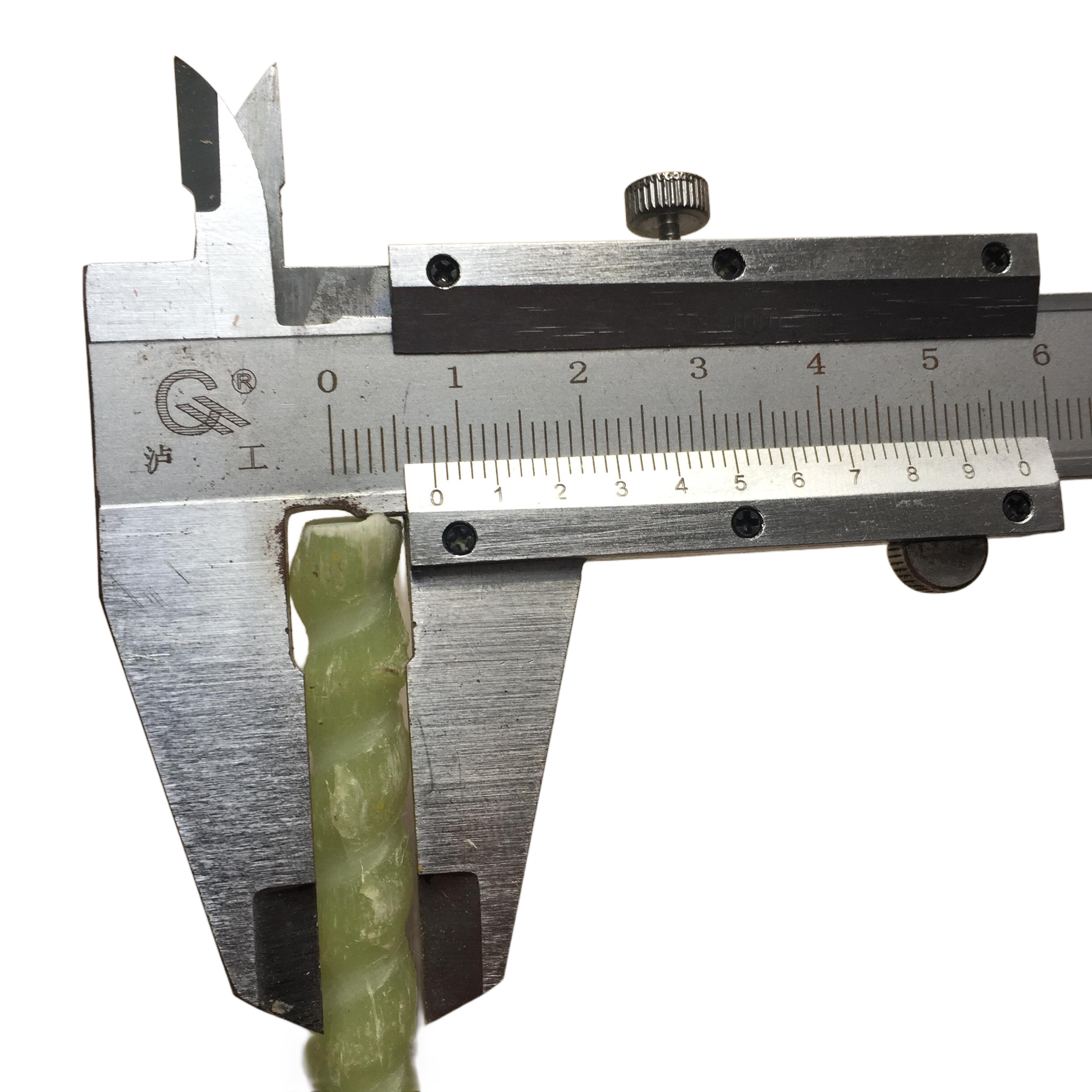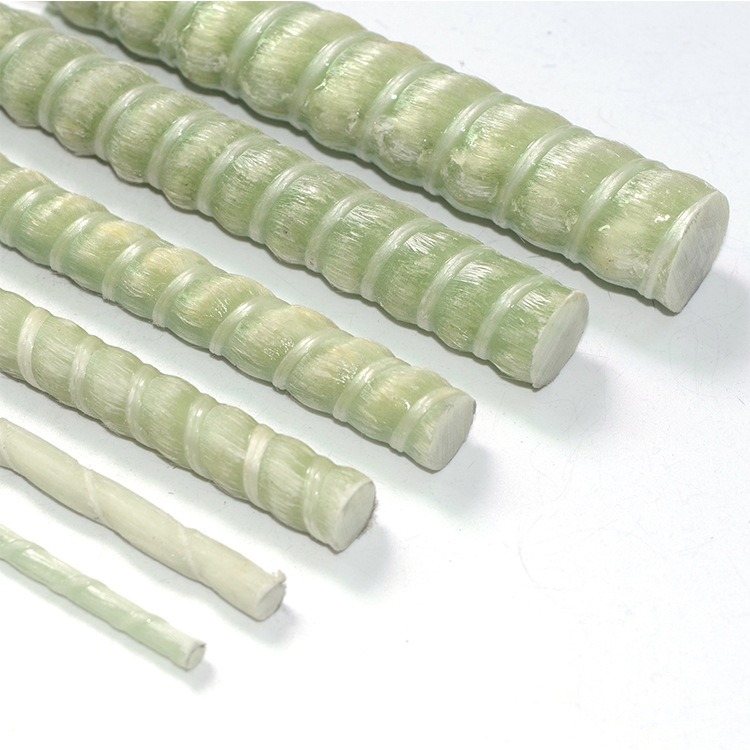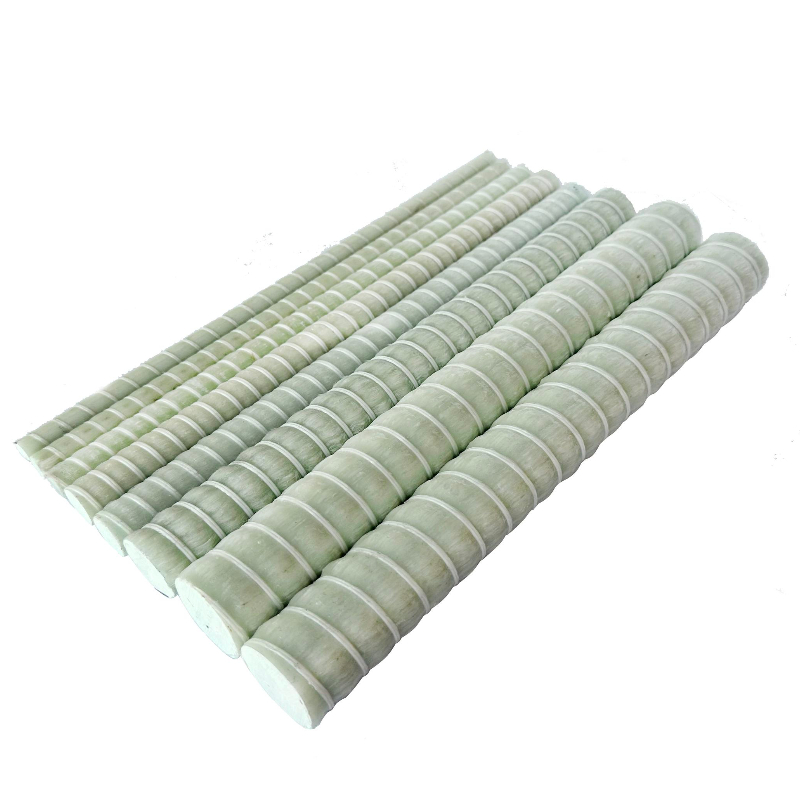Introduction
Fiberglass rebar, also known as Glass Fiber Reinforced Polymer (GFRP) rebar, has emerged as a revolutionary material in the construction industry. This composite material combines glass fiber and polymer resin, offering exceptional properties that outperform traditional steel rebar in various applications. The growing interest in sustainable and long-lasting construction materials has positioned fiberglass rebar at the forefront of modern engineering solutions.
This article delves into the intricate details of fiberglass rebar, exploring its composition, advantages, manufacturing processes, and applications across different sectors. By examining recent research, case studies, and industry trends, we aim to provide a comprehensive understanding of how fiberglass rebar is shaping the future of construction and infrastructure development.
Composition and Manufacturing of Fiberglass Rebar
Fiberglass rebar is composed of continuous glass fiber strands embedded in a polymer matrix. The glass fibers provide high tensile strength, while the polymer resin offers chemical resistance and durability. The manufacturing process typically involves pultrusion, where fibers are pulled through a resin bath and then passed through a heated die to form the desired shape.
Advanced manufacturing techniques have allowed for the production of various profiles and sizes of fiberglass rebar. These innovations have expanded its applicability, allowing engineers to tailor the material to specific project requirements. The controlled manufacturing environment ensures consistent quality and performance standards, aligning with international building codes and regulations.
Advantages Over Traditional Steel Rebar
One of the most significant advantages of fiberglass rebar is its resistance to corrosion. Unlike steel rebar, which is susceptible to rusting when exposed to moisture and chemicals, fiberglass rebar remains unaffected, thereby extending the lifespan of concrete structures. This characteristic makes it particularly suitable for marine environments, chemical plants, and wastewater treatment facilities.
Additionally, fiberglass rebar is non-conductive and non-magnetic, which is essential in applications where electromagnetic interference must be minimized. Its lightweight nature, being approximately one-quarter the weight of steel, reduces transportation and handling costs. Furthermore, the high tensile strength-to-weight ratio enhances structural efficiency without compromising safety standards.
Thermal Properties and Insulation
Fiberglass rebar exhibits low thermal conductivity, which helps in reducing thermal bridging in concrete structures. This property contributes to improved energy efficiency in buildings by minimizing heat loss or gain through the reinforcement. Consequently, it supports sustainable construction practices and aligns with global efforts to reduce carbon footprints in the building sector.
Applications in Infrastructure Projects
The versatility of fiberglass rebar has led to its adoption in various infrastructure projects. In bridge construction, it is used to reinforce decks and piers, effectively combating the corrosive effects of de-icing salts and marine environments. The fiberglass reinforcement profiles provide long-term durability and reduce maintenance costs.
In highway construction, fiberglass rebar enhances pavement performance by reducing cracking and extending service life. Airport runways and taxiways also benefit from its use, where the non-magnetic properties prevent interference with navigation and communication equipment. Moreover, its application in tunnel linings and retaining walls addresses concerns related to electromagnetic fields and corrosion.
Marine and Coastal Structures
Marine structures like docks, seawalls, and offshore platforms are constantly exposed to harsh saline environments. Traditional steel rebar in such settings is prone to accelerated corrosion, leading to structural degradation. Fiberglass rebar offers a viable solution due to its inherent corrosion resistance, ensuring structural integrity over extended periods. Studies have shown that structures reinforced with fiberglass rebar demonstrate superior performance and lower lifecycle costs.
Role in Sustainable Construction
Sustainability has become a crucial consideration in the construction industry. Fiberglass rebar contributes to environmental objectives by enhancing the longevity of structures and reducing the need for repairs and replacements. Its production process emits fewer greenhouse gases compared to steel manufacturing. Additionally, the lightweight nature leads to decreased fuel consumption during transportation.
The use of GFRP insulation connectors alongside fiberglass rebar further improves the thermal efficiency of buildings. Architects and engineers are increasingly incorporating these materials to achieve green building certifications and comply with stringent energy codes.
Economic Impact and Cost Analysis
While the initial cost of fiberglass rebar may be higher than traditional steel rebar, the long-term economic benefits often outweigh the upfront expenses. Reduced maintenance and extended service life lead to significant savings over time. A detailed cost-benefit analysis indicates that fiberglass rebar can reduce overall project costs by minimizing downtime and repair expenses.
Market trends suggest a growing demand for fiberglass rebar, driven by its performance advantages and the increasing focus on sustainability. Manufacturers are scaling up production capacities, which is expected to enhance supply chains and reduce costs through economies of scale.
Case Studies
Several notable projects have successfully implemented fiberglass rebar. For instance, the reconstruction of the Pier 57 in Seattle utilized fiberglass rebar to address corrosion issues, resulting in a structure designed to last over 75 years with minimal maintenance. Similarly, highway overpasses in Canada have employed fiberglass rebar to withstand extreme temperature fluctuations and de-icing chemicals.
Installation and Handling Considerations
Installing fiberglass rebar requires adherence to specific guidelines to ensure optimal performance. The material can be cut using standard diamond-tipped blades, and its lightweight nature simplifies the handling process on-site. Contractors must be trained to understand the differences from steel rebar, particularly regarding bend radius limitations and anchoring techniques.
Moreover, tying methods for fiberglass rebar differ slightly from steel. Non-metallic ties or clips are often used to maintain the non-conductive and non-corrosive advantages of the reinforcement. Proper storage and handling prevent damage to the fibers, ensuring the material retains its structural properties.
Comparative Analysis with Steel Rebar
Comparisons between fiberglass rebar and traditional steel rebar highlight several key differences. Fiberglass rebar exhibits higher tensile strength-to-weight ratios, corrosion resistance, and electromagnetic neutrality. However, steel rebar remains advantageous in applications requiring high ductility or where long-term creep could be a concern.
Engineering judgment is essential when selecting the appropriate reinforcement material. Factors such as environmental exposure, structural requirements, and lifecycle costs must be considered. The integration of both materials in hybrid designs can sometimes offer an optimal solution, leveraging the benefits of each type.
Research and Development
Ongoing research focuses on enhancing the properties of fiberglass rebar. Efforts include improving the bond strength with concrete, increasing the modulus of elasticity, and developing new resin formulations for better performance. Collaborative projects between academia and industry aim to address the limitations and expand the applicability of fiberglass rebar in structural engineering.
Regulatory Standards and Certifications
Compliance with building codes and standards is crucial for the widespread adoption of fiberglass rebar. Organizations such as the American Concrete Institute (ACI) and the Canadian Standards Association (CSA) have developed guidelines for the use of fiber-reinforced polymer (FRP) materials in construction.
Manufacturers must ensure that their products meet the required specifications through rigorous testing and quality control measures. Certifications provide assurance to engineers and contractors regarding the performance and reliability of fiberglass rebar in various applications.
Challenges and Limitations
Despite its advantages, fiberglass rebar faces certain challenges. The material's lower modulus of elasticity compared to steel can result in greater deflections under load, which must be accounted for in design calculations. There are also considerations regarding long-term creep and fatigue behavior under sustained loads.
Furthermore, the lack of familiarity among some engineers and contractors can hinder its adoption. Education and training are essential to overcome misconceptions and to promote best practices in the use of fiberglass rebar. Addressing these challenges is key to unlocking the full potential of this innovative material.
Future Prospects
The future of fiberglass rebar appears promising, with increasing research and development efforts driving innovation. The material aligns with global trends toward sustainable and resilient infrastructure. Advancements in composite technology may lead to improved properties and reduced costs, further enhancing its competitiveness against traditional materials.
Emerging applications, such as in renewable energy structures like wind turbine foundations and tidal barriers, offer new opportunities for fiberglass rebar. The industry's growth is likely to be supported by collaborations between material scientists, engineers, and construction professionals.
Conclusion
Fiberglass rebar represents a significant advancement in construction materials, offering a combination of strength, durability, and resistance to environmental degradation. Its benefits over traditional steel rebar make it an attractive option for a wide range of applications. As the industry continues to evolve, fiberglass rebar is poised to play a critical role in building sustainable and resilient infrastructure for the future.
For engineers and contractors seeking innovative solutions, embracing fiberglass rebar can lead to improved project outcomes and long-term benefits. Continued research, education, and collaboration will be essential in overcoming challenges and maximizing the potential of this remarkable material.



























